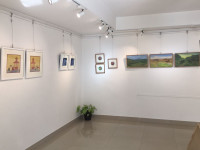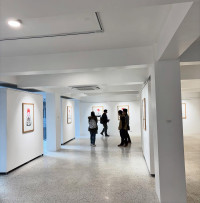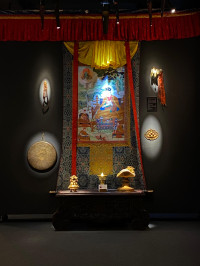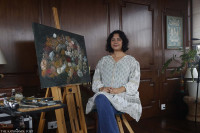Arts
Taking Nepali arts to new heights
In its annual board assembly, Nepal Academy of Fine Arts laid out its plans and policies to further develop the arts.
Post Report
Nepal Academy of Fine Arts (NAFA) held its 14th board assembly meeting on Saturday. The program was inaugurated by Sudan Kirati, the minister of culture, tourism and civil aviation, at noon. NAFA is the foremost institution for art research and exhibitions and the all-encompassing organisation for Nepali artists, scholars, and art critics. It recently formed a new academic council under the leadership of Naradmani Hartamchhali. The new council will serve for four years.
In the program, Kiranti highlighted the need to focus on indigenous knowledge and skills within the art scene. He stated that the government had proposed the idea of opening a university which prioritised indigenous knowledge to advance academia while also conserving human-to-human knowledge. “We have discussed the idea of a different university to safeguard societal values,” he stated. He remarked on the importance of working selflessly by citing the examples of Motiram Bhatta, Laxmi Prasad Devkota, and Nelson Mandela. “Only by working together can we improve,” he continued.
Sushila Sirpali, the state minister for culture, tourism, and civil aviation, also spoke at the event. She said that NAFA needed to develop projects that could support the arts for decades to come, focusing on long-term goals rather than short ones.
Ram Kumar Phuyal, a member of the National Planning Commission, talked about the importance of focusing on multilingual museums, research, archival, and living museums, as well as in the fields of language, literature, music, and fine arts. NAFA’s vice-chancellor, Lal Kaji Lama, stated that NAFA’s academic council had developed its plans and policies to ensure Nepali arts reach new heights every year.
This occasion also marked the launch of sculpture artist Narendra Prasad Bhandari’s book titled ‘Contemporary Nepali Sculpture and Sculptor’. “During the process of research for my book, I talked to several sculptors. They gave me suggestions and guidance,” he said. “The advancement of Nepali art has been placed in our hands. So, only making policies won’t be enough. We must lend a land in all ways possible,” he says, hoping that in the coming days, the council will function in a way that will have a long-term influence by diving deeper into issues that plague the art scene.
Finally, chancellor Hartamchhali concluded that fine arts have many challenges and fresh opportunities. “The Academy has made progress on structural and policy issues during this term. The benefits will become apparent in due course.”




 6.73°C Kathmandu
6.73°C Kathmandu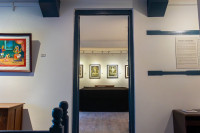
%20(1).jpg&w=200&height=120)
